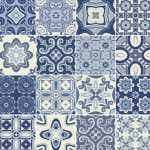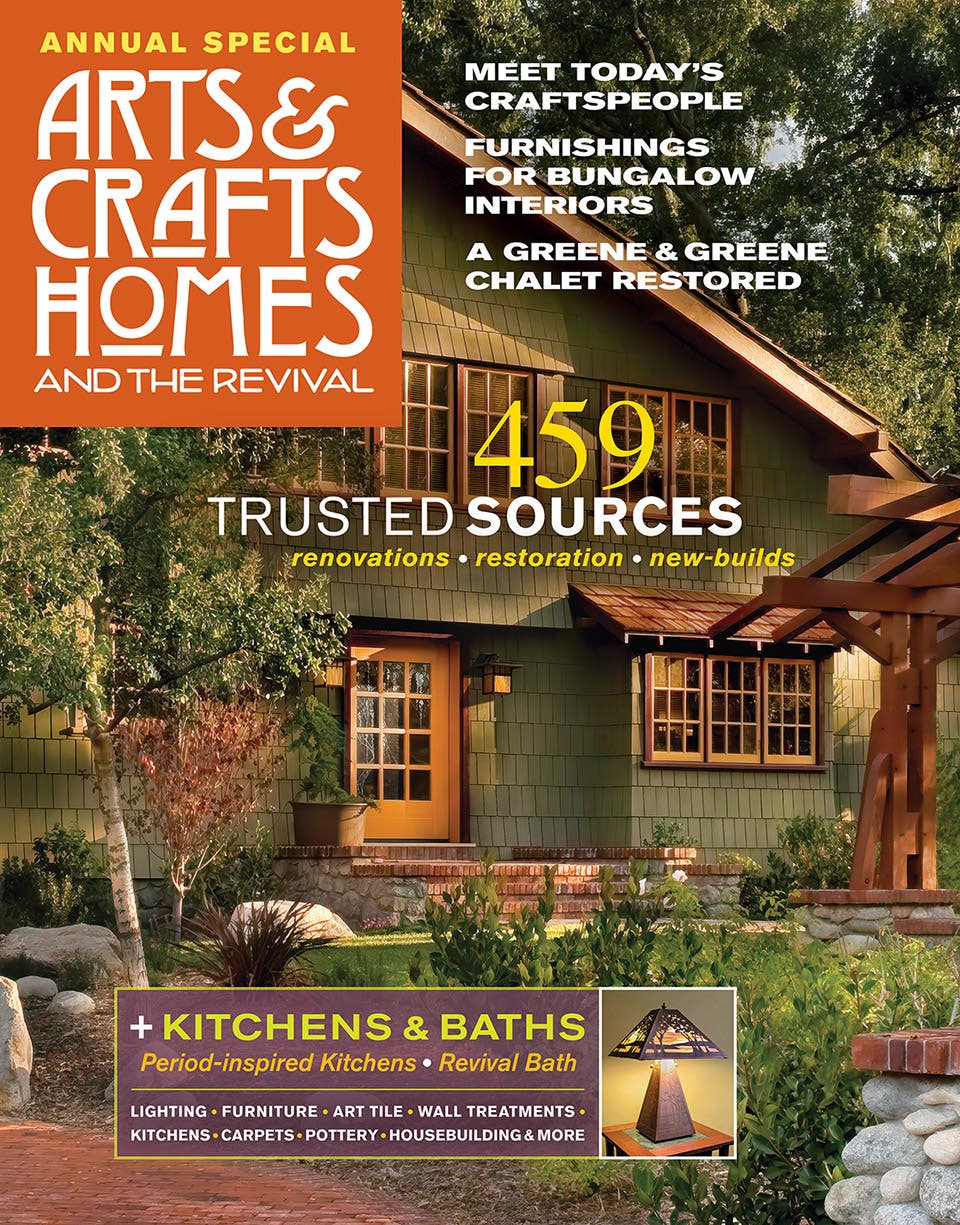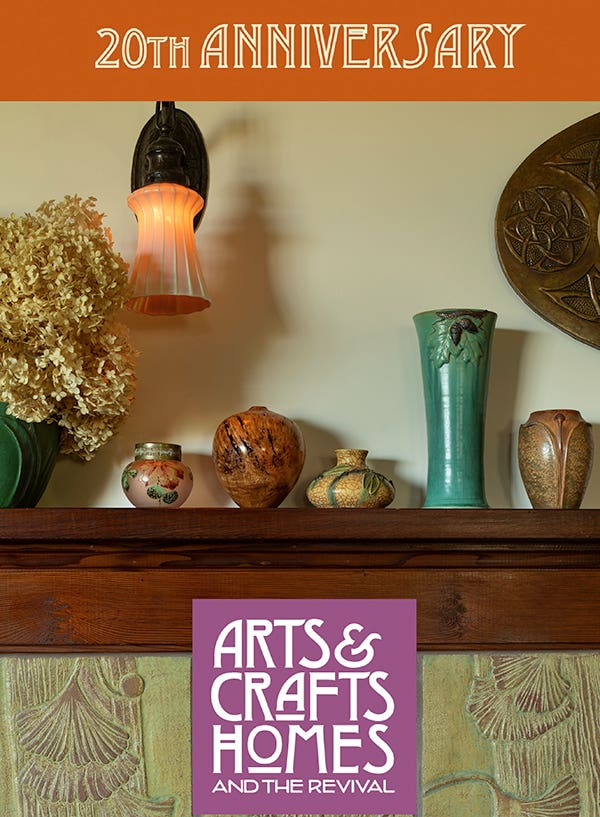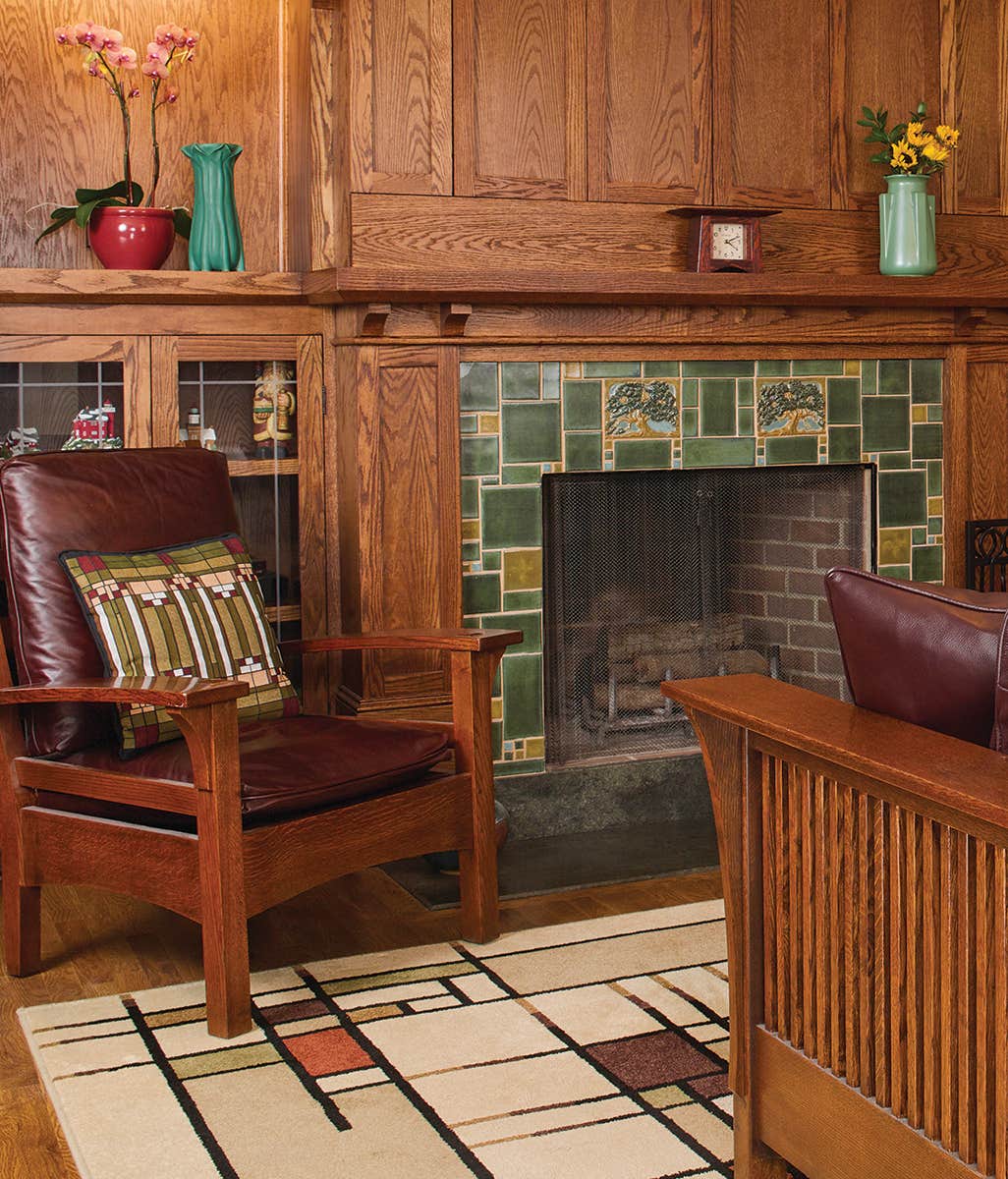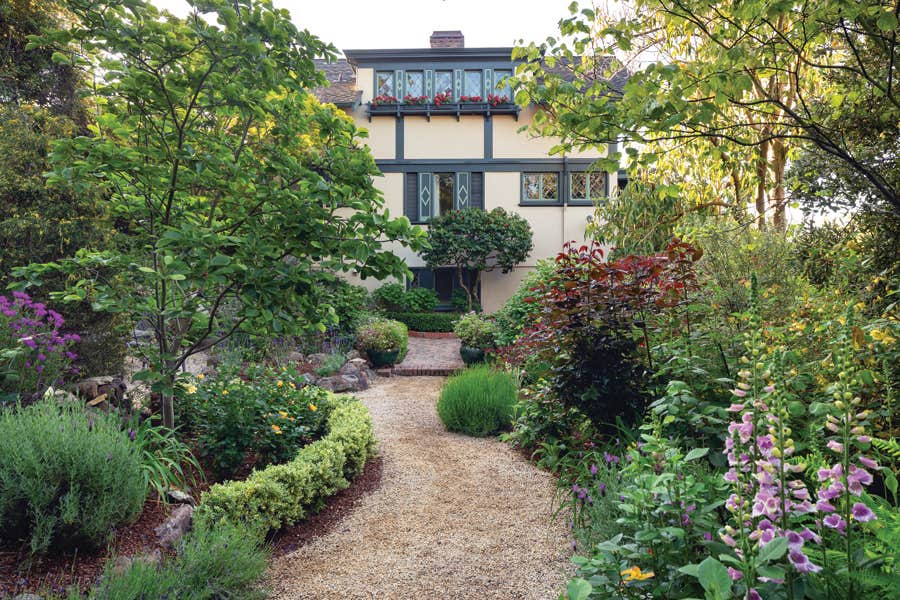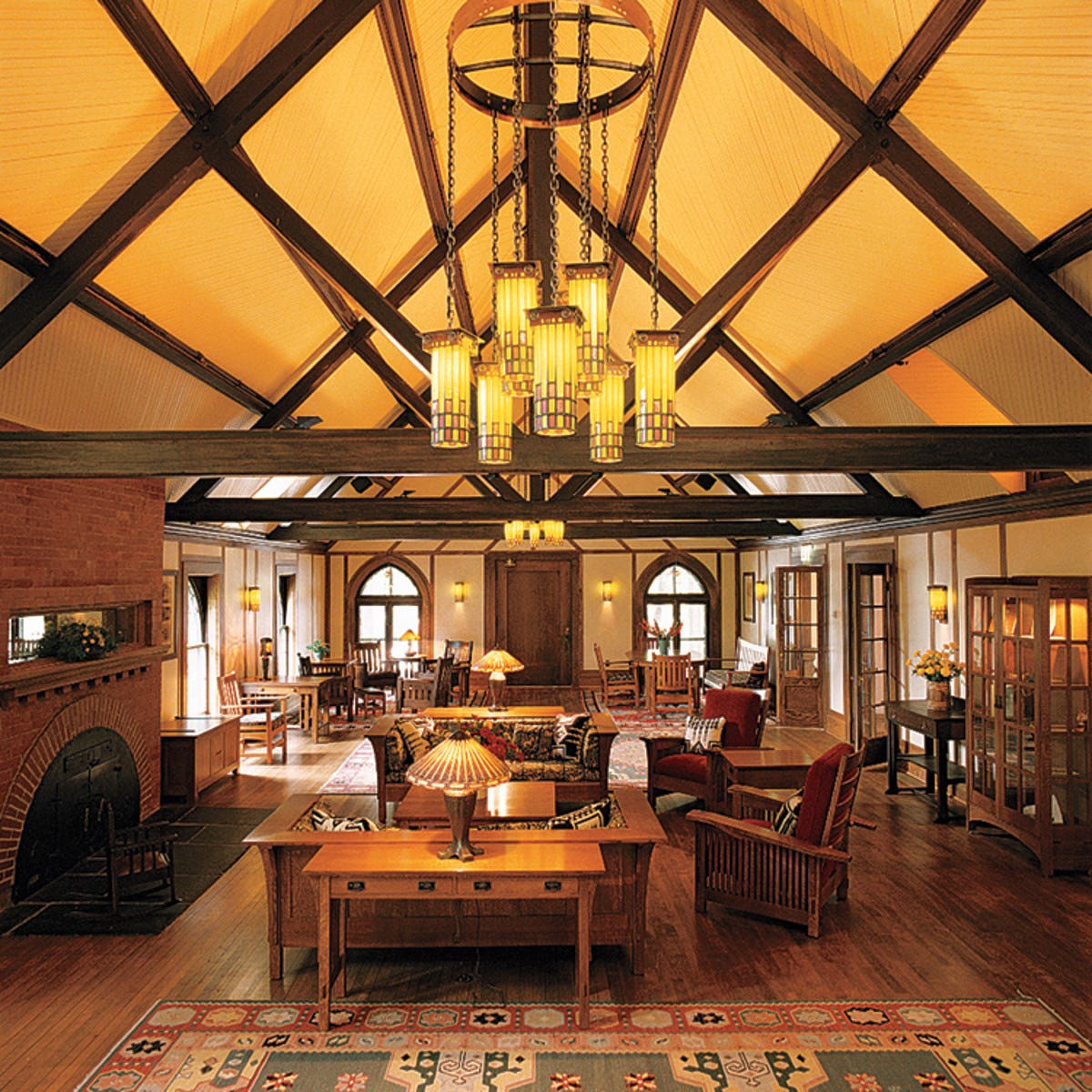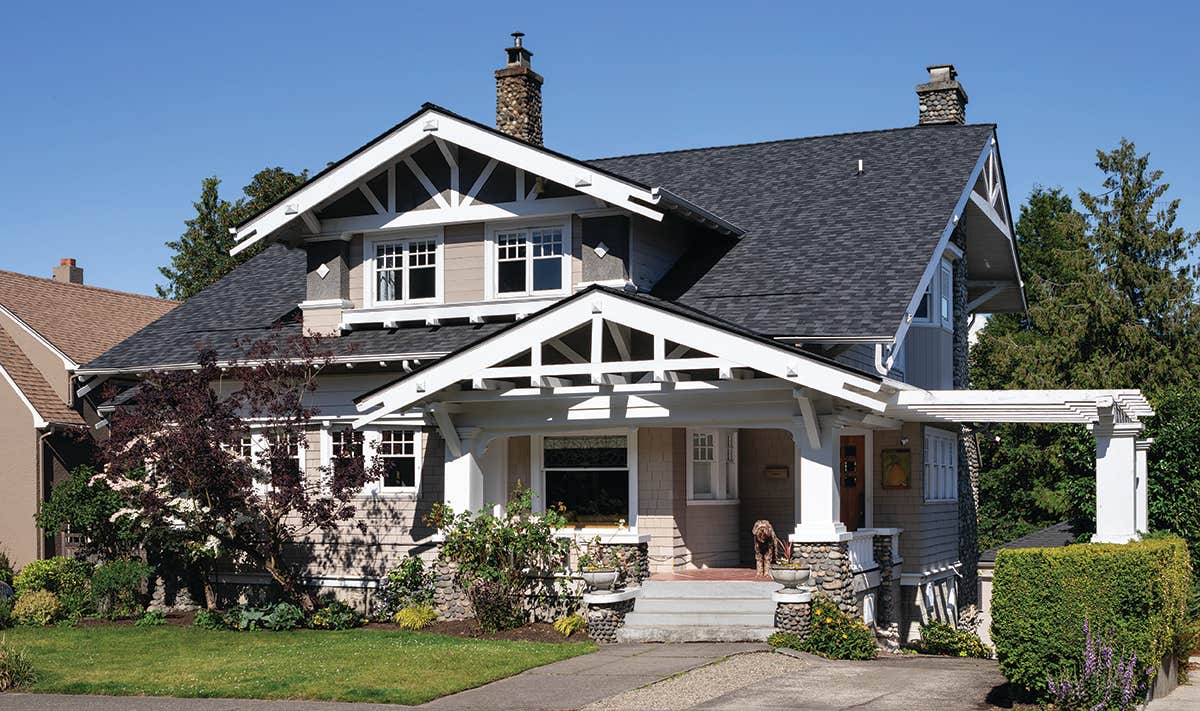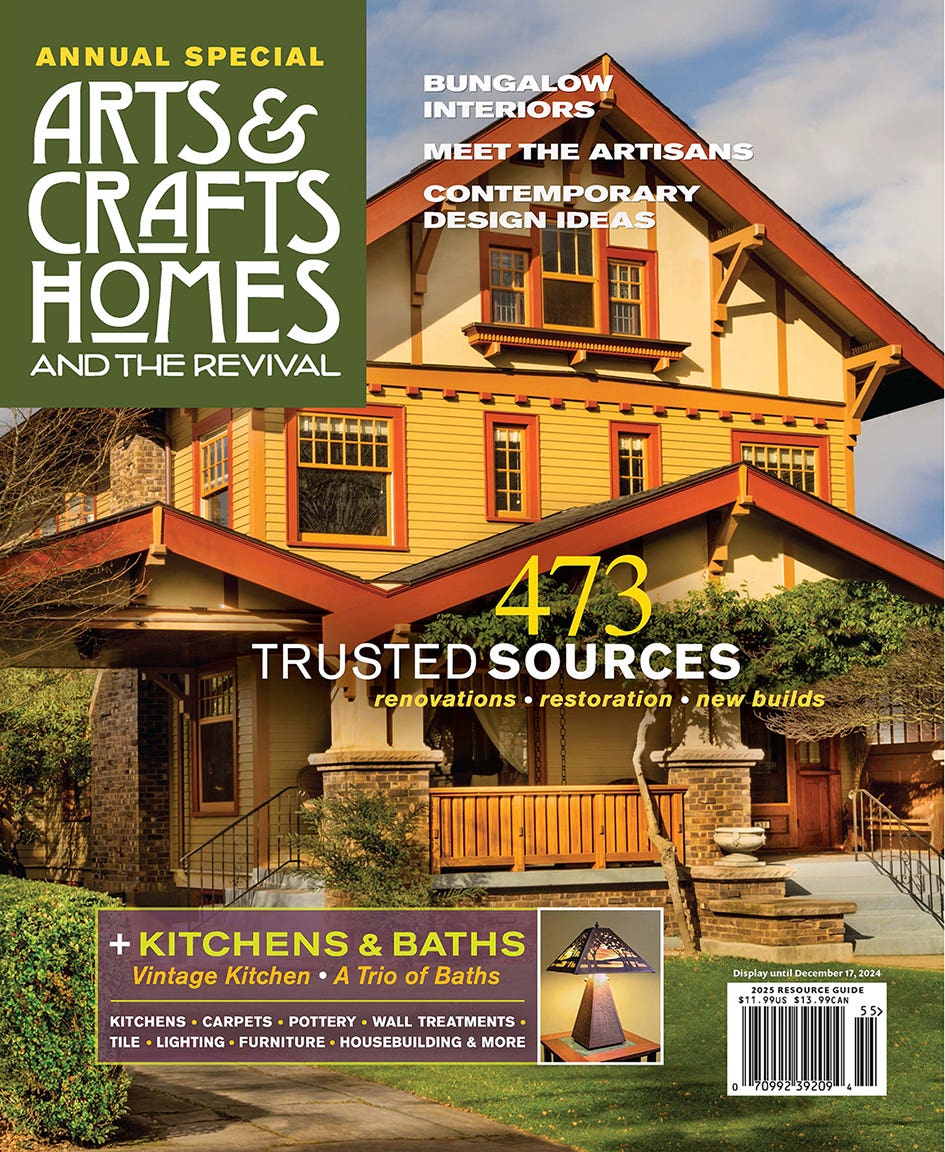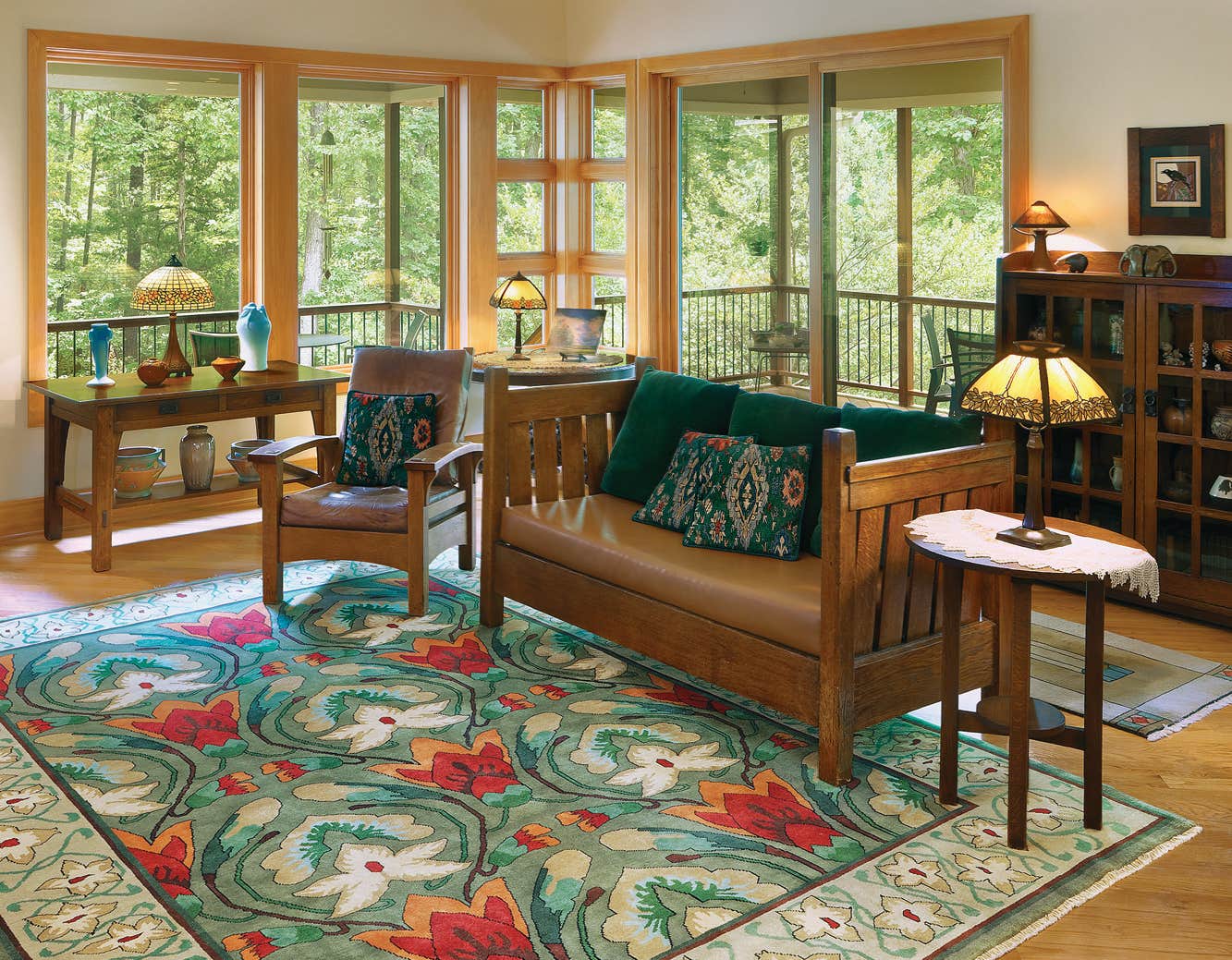1912 Santa Barbara Bungalow Brought Back
An artistic couple rescue a good old house from a rude 1960s modernization, bringing back fir woodwork and built-ins, then furnishing with antiques.
Built in 1912 for $1,500, the modest but comfortable bungalow was sited on a sunny Santa Barbara street near the trolley line. Past owners (a dentist, the city coroner, a one-time mayor) had, for a half-century, made few changes. But then a retired Air Force captain bought the place in 1966 and with military precision embarked on a campaign to eradicate what he called the “mucky-yuck brown.”
He painted all of the original fir woodwork white, and coated the earthy brick fireplace with a clownish bright red outlined in white. He replaced the front door’s sidelights with louvered windows for ventilation, and then he demolished the dining room, ripping out handsome wainscoting and removing the built-in buffet (along with the bearing wall) between dining room and kitchen. Walls were then covered in particleboard paneling, and a false ceiling went up to cover the box beams.
No room in the house was safe. The captain tore out original kitchen cabinets, gutted the bathroom, and removed the master bedroom’s bay window (no one is sure why). He covered oak and fir floors with beige shag carpeting, and poured a gooey faux terrazzo finish on bathroom and porch floors. Finding the bungalow now sufficiently modernized, the satisfied captain sold it, and promptly moved to a tract house in Goleta.
When Bob Sponsel bought the house in 1980, it was hard to tell what had been. He paid a visit to the captain, and learned that the retired officer had taken before and after photos to document his work. Bob realized that the good bones and more were still there, and a clear vision materialized for restoration. Working with his wife the artist Patricia Chidlaw, Sponsel would spend decades meticulously repairing and replacing, winning the Santa Barbara Beautiful Award in the process.
The couple began in the dining room, mustering the courage one afternoon to smash through the false ceiling, finding to their delight the original box beams were perfectly preserved, as was the original mahogany stain that would guide woodwork restoration.
Bob and Patricia were not sure how they would ever replace the missing china buffet. In a stroke of luck, they heard of a bungalow that was to be razed for an office building, just blocks away; they snapped up the salvage rights for $300. The doomed 1914 house had a built-in cabinet, wainscoting, French doors, and even wall sconces that fit their own bungalow. Their talented carpenter built a new wall in the dining room to seamlessly fit the buffet cabinet and wainscoting, all of which looks original. “Before, the dining room had had all the charm of a double-wide trailer,” Patricia jokes.
Walking the dog one morning, Patricia saw a clawfoot tub on the curb, and she pushed it home on a dolly. When Bob’s mother told him about a Craftsman-era hotel that was being used for senior housing—and about the “dusty old furniture” stored in its attic—the couple paid a visit and came home with two antique L. & J.G. Stickley settles.
The rest of the project went smoothly. In the living room, the woodwork and beams were stripped, then re-stained with Minwax’s mellow red mahogany: “a truly lovely mucky-yuck brown,” Patricia winks. When some neighbors decided to “upgrade” their old lighting, Bob took the japanned brass and art glass ceiling fixture from their trash.
Nothing remained of the original kitchen. Out went the captain’s 1960s particleboard cabinets, his plastic drop ceiling and fluorescent lighting. A skylight now admits the California sunshine. Ghosts of the original cabinets remained on the walls, to guide size and placement of period-appropriate fir cabinets with glass fronts. A vintage 1930s GE monitor-top refrigerator and a 1950s Wedgewood stove have worked fine in the decades since they were refurbished.
Brian D. Coleman, M.D., is the West Coast editor for Arts & Crafts Homes and Old House Journal magazines, our foremost scout and stylist, and has authored over 20 books on home design.
